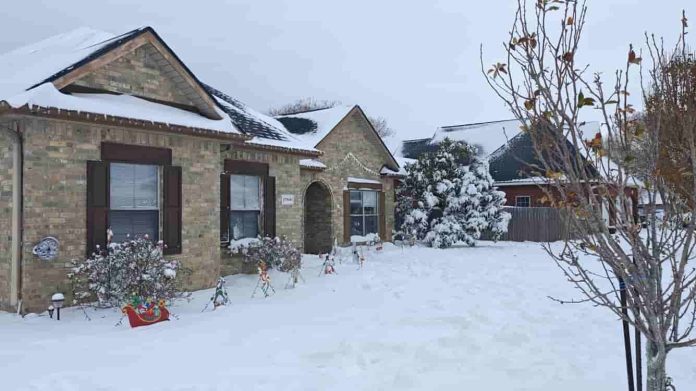Extreme weather can cause serious damage to homes, leading to costly repairs and unsafe conditions. From heavy snowfall and freezing temperatures to strong storms and heavy rain, homeowners in Montgomery County, PA, must be prepared for different weather challenges throughout the year. Taking preventive steps before extreme weather arrives can help protect both property and personal safety.
Homeowners who prepare ahead of time reduce the risk of damage to their homes. Preventative maintenance, regular inspections, and small upgrades can go a long way in preventing structural damage, flooding, and heating system failures. The key is to identify potential risks and address them before they turn into bigger problems.
This article covers essential steps to protect homes from extreme weather, including strengthening structures, maintaining heating and electrical systems, and creating an emergency plan. By taking action early, homeowners can avoid unnecessary damage and stay safe during harsh weather conditions.
Assessing Your Home’s Vulnerabilities
Before making improvements, it’s important to assess weak points in the home. Identifying areas that are most at risk helps homeowners know where to focus their efforts.
- Inspecting the roof and siding: Check for loose or missing shingles and siding that could be damaged by strong winds or heavy snow. A sturdy roof prevents leaks and structural damage.
- Checking windows and doors: Drafty windows and poorly sealed doors let in cold air, increasing heating costs in the winter. Proper sealing also helps keep heavy rain from seeping inside.
- Evaluating the drainage system: Gutters should be clear of debris to allow proper water flow. Clogged gutters can cause ice dams in winter and water damage in heavy rain.
During winter in Montgomery County, heating systems work harder to keep homes warm. A well-maintained heating system prevents breakdowns during the coldest months. Scheduling heating repair in Montgomery County, PA, before winter arrives can help homeowners avoid emergency breakdowns during freezing temperatures. A properly functioning heating system reduces energy costs and keeps indoor temperatures comfortable.
Strengthening the Exterior of Your Home
The exterior of a home takes the brunt of extreme weather. Strong winds, heavy rain, and snow can cause damage to roofs, windows, and outdoor structures. Making a few upgrades improves the home’s ability to withstand severe conditions.
- Reinforce the roof: Loose shingles or weak areas on the roof can become a major problem during a storm. If there are signs of damage, it’s best to repair or replace them before severe weather strikes.
- Install impact-resistant windows: High winds and flying debris can break windows, leading to costly repairs and possible injuries. Storm shutters or reinforced glass offer extra protection.
- Seal doors and windows: Gaps around doors and windows allow cold air to enter and warm air to escape. Using weather stripping and caulking prevents drafts and reduces heating costs.
- Trim trees and remove loose branches: Strong winds can turn weak tree limbs into dangerous projectiles. Regularly trimming trees near the home reduces the risk of damage.
Taking these steps strengthens the home against harsh weather, preventing costly repairs and safety hazards. By reinforcing key areas, homeowners reduce the chances of serious damage during extreme weather conditions.
Protecting Indoor Systems and Appliances
Extreme weather can impact indoor systems just as much as exterior structures. Failing HVAC systems, burst pipes, or power outages can create unsafe conditions inside the home. Preparing these systems in advance helps keep the home functional and safe.
- Check the HVAC system: Heating and cooling systems should be inspected before extreme weather arrives. Regular maintenance, including changing air filters and cleaning vents, improves efficiency and prevents breakdowns.
- Insulate pipes to prevent freezing: When temperatures drop, exposed pipes can freeze and burst, leading to major water damage. Wrapping pipes with insulation helps protect them during cold weather.
- Secure electrical systems: Power outages are common during storms. Surge protectors help protect appliances from electrical damage. It’s also useful to have battery-powered lights or backup generators in case of extended outages.
- Keep an emergency heat source: If a heating system stops working in extreme cold, portable heaters or a fireplace can provide warmth. However, these should always be used with proper ventilation to avoid carbon monoxide risks.
These small steps keep essential systems running during extreme weather, preventing costly repairs and keeping the home safe.
Preparing for Flooding and Water Damage
Flooding can cause extensive damage in a short period. Whether from heavy rain, melting snow, or storm surges, water buildup leads to structural issues, mold growth, and ruined belongings. Taking precautions before flooding happens helps reduce the impact.
- Install a sump pump: A sump pump removes excess water from basements and crawl spaces, preventing flooding. If a home is in a flood-prone area, having a battery backup for the sump pump helps in case of power loss.
- Elevate valuables and electrical components: Keeping important documents, electronics, and valuables off the ground reduces damage risk. Outlets and electrical wiring in flood-prone areas should be installed higher to avoid water exposure.
- Use water-resistant materials: If the home is prone to flooding, using water-resistant materials for flooring and walls minimizes long-term damage. Tiles, waterproof paint, and treated wood help prevent water absorption.
- Have sandbags or flood barriers ready: Placing sandbags around doors and low-lying entry points helps prevent floodwater from entering the home. Temporary flood barriers can also be effective for homes in high-risk areas.
Flood prevention steps reduce water damage risks, protecting both the home and personal belongings.
Creating an Emergency Plan for Your Household
A well-prepared emergency plan helps homeowners stay calm and take the right steps during extreme weather. Every household should have a plan that includes supplies, communication, and evacuation procedures.
- Stock up on emergency essentials: Keep non-perishable food, bottled water, flashlights, batteries, and first aid supplies on hand. Power outages or road closures can make it difficult to access necessities.
- Set up a communication plan: If family members are separated during extreme weather, having a designated meeting place and emergency contacts makes it easier to reconnect.
- Know evacuation routes: Some weather events, like hurricanes or floods, may require evacuation. Understanding local evacuation routes and shelter locations is important.
- Store important documents safely: Keeping insurance papers, identification, and medical records in a waterproof and fireproof container protects essential information.
A clear emergency plan helps homeowners stay prepared, keeping everyone safe and reducing stress during severe weather events.
Preparing for extreme weather protects both the home and those living in it. Strengthening structures, maintaining indoor systems, and having an emergency plan all contribute to a safer living environment. Being proactive helps reduce damage, avoid costly repairs, and keep the home comfortable even during harsh conditions. Taking the right steps now makes it easier to handle whatever weather challenges come in the future.

